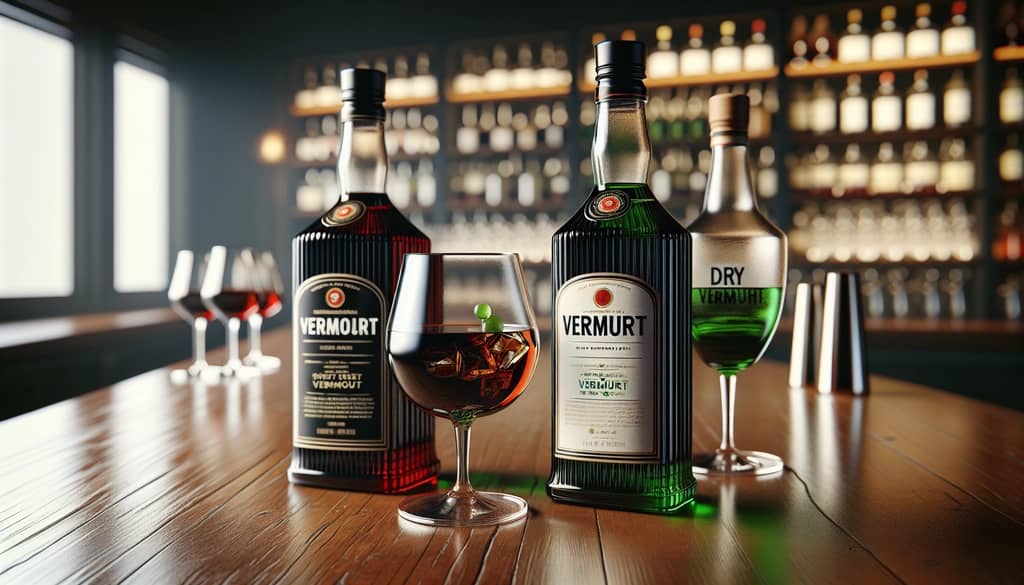Updated on: 6/3/2025
Is Sweet Vermouth the Same as Dry Vermouth?

The difference between sweet vermouth and dry vermouth is much more than just taste. While both belong to the aromatic fortified wine family and start with a base of wine infused with botanicals, they diverge in style, application, and appearance. Choosing the right one determines how balanced and enjoyable your cocktail will be.
Sweet Vermouth vs Dry Vermouth: Key Differences
- Sweet vermouth, sometimes called red or Italian vermouth, has a rich, bittersweet profile and a reddish-brown color.
- Dry vermouth (also known as French vermouth) is much lighter in taste, lower in sugar, and typically straw or pale yellow.
- Sweet vermouth works best in whiskey-based cocktails like the Manhattan, while dry vermouth is favored for lighter, refreshing drinks such as the classic Martini.
- Their different sugar content and botanical blends affect the flavor direction of cocktails—using the wrong style can throw off the entire balance.
How Sweet and Dry Vermouth Are Made
Both styles start their journey as wine fortified with neutral grape spirit, but the difference lies in the botanicals and final sweetening. Sweet vermouth gets caramel or concentrated grape must added, giving it a richer taste and deeper color. Dry vermouth uses a restrained blend of herbs and only a trace of sugar, resulting in a crisp, floral character.
- Sweet vermouth: higher sugar content (up to 150 g/L), botanicals often include vanilla, cinnamon, and dried fruits.
- Dry vermouth: lower sugar (usually under 50 g/L), focused on herbs like chamomile, citrus peel, wormwood.

Which Cocktails Use Sweet or Dry Vermouth?
Classic recipes are built around using the right type of vermouth, as swapping them changes the balance and intent of the drink. Here’s where each shines:
- Sweet vermouth: Manhattan, Negroni, Rob Roy, Americano
- Dry vermouth: Martini, Gibson, El Presidente, classic Bamboo

Choosing the Right Vermouth for Your Drink
The choice isn’t just personal preference; it’s a matter of harmony. If a recipe calls for sweet vermouth, substituting dry will leave your drink noticeably less rich and more bitter. The opposite swap can overwhelm with sweetness. For home bartenders, keeping one of each style in the fridge ensures you’re ready for both classic and modern recipes.
- Store opened vermouth in the refrigerator; it’s a fortified wine, not a spirit. Freshness drops after about a month.
- Always taste before mixing—aroma and sweetness should be vibrant.
Summary: Two Distinct Tools for Your Bar
Sweet vermouth and dry vermouth are not interchangeable. Their contrasts in sugar, color, and botanicals mean each brings something essential to classic cocktails. Understanding how they differ—and keeping both on hand—lets you mix with confidence and craft drinks that highlight their unique characters.